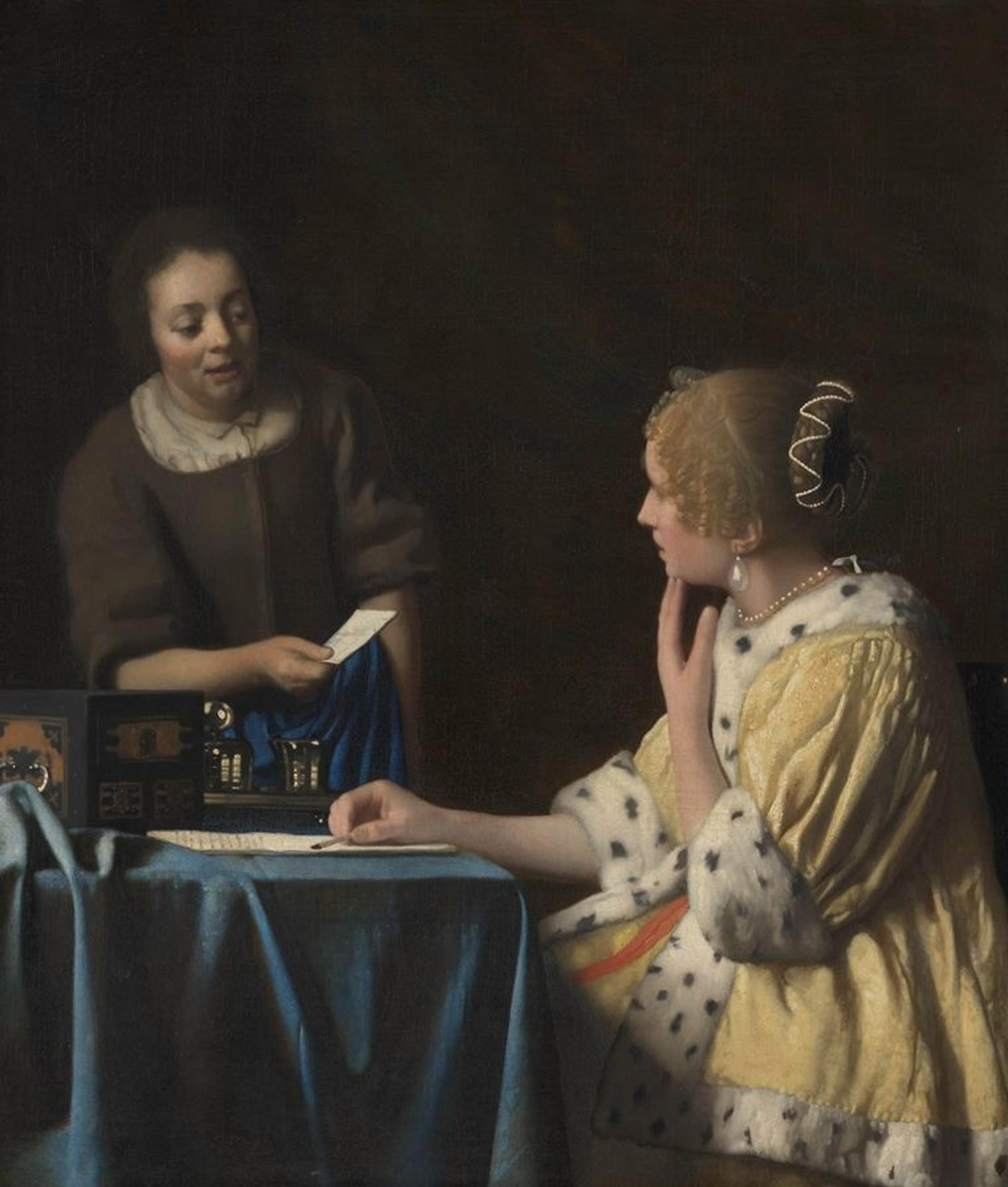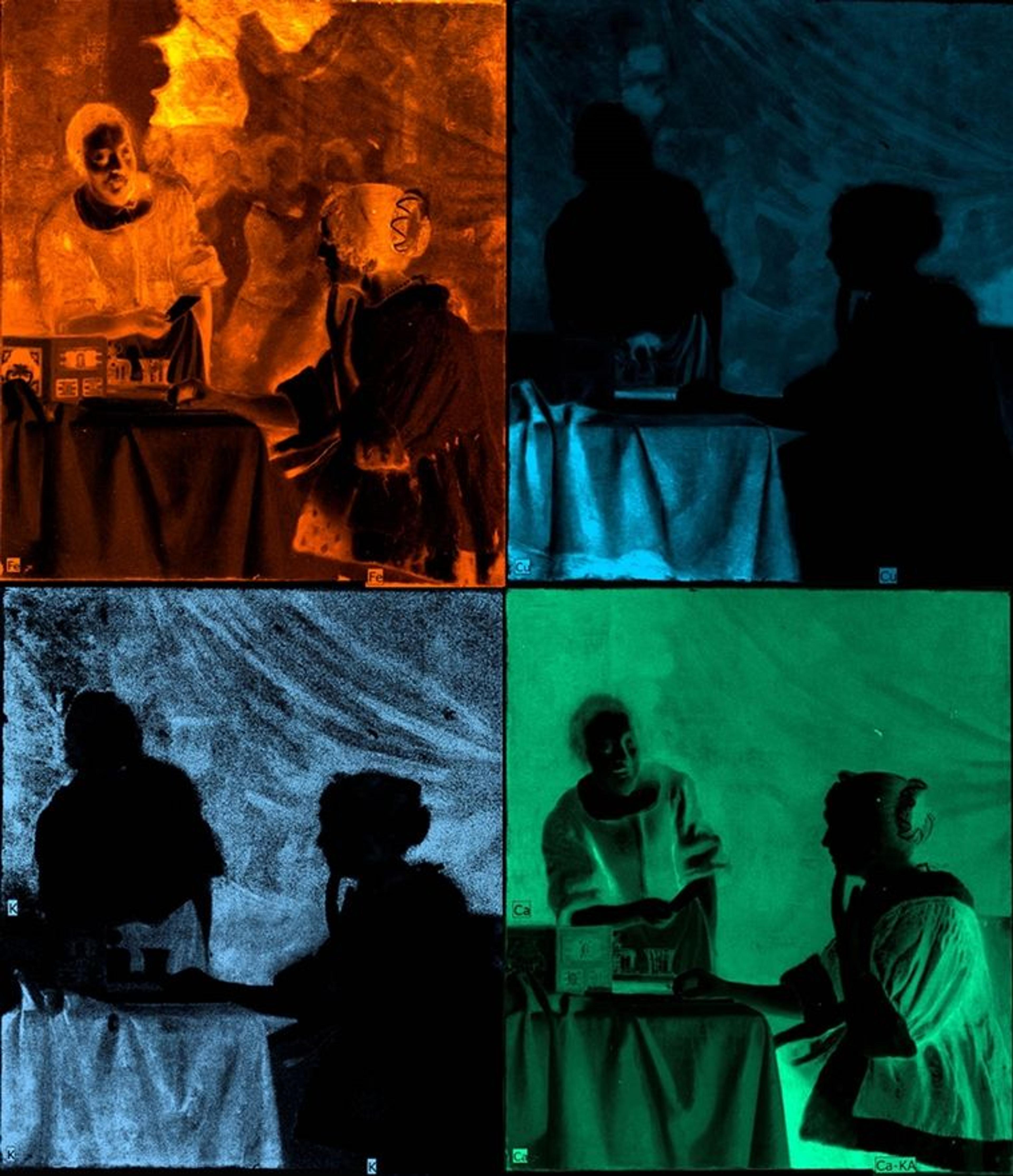
Johannes Vermeer (1632–1675), Mistress and Maid, 1666–67. Oil on canvas, 5 1/2 x 31 in. (90.2 x 78.7 cm). The Frick Collection, New York; Henry Clay Frick Bequest (1919.1.26)
In Johannes Vermeer's Mistress and Maid (1666–67), at The Frick Collection in New York City, two women contemplate a newly arrived letter. The elegantly dressed mistress is dramatically lit, while the modest maid emerges from the dark background to deliver the message. The letter's inscrutable contents and the mistress' ambiguous expression evoke a sense of mystery and foreboding.
The painting also appears somewhat unfinished, given the simple curtain in an otherwise dark and empty background. Art historians have puzzled over this since at least since the 1950s. Some have even suggested that the painting was completed after Vermeer's death to make it salable.
Scientists, conservators, and art historians interrogate works of art by looking at them under the microscope. They also use non-invasive analytical and imaging techniques including X-radiography, infrared reflectography, and macro X-ray fluorescence. In some cases, important questions cannot be answered with these techniques alone, so experts use surgical tools to take micro-samples; imagine something the size of a period in ten-point font. These samples are often kept in archives so they can be revisited when more powerful micro-analytical methods become available.
Today, some of the questions surrounding Vermeer's enigmatic painting have been put to rest. The team's recent investigation using infrared reflectography, macro X-ray fluorescence, and the analysis of a few micro-samples reveals that the composition began with a tapestry or painting filling the background, which Vermeer later painted over, perhaps deciding that a dark, plain backdrop would better focus the viewer's attention on the women's interactions. In the previous background, Vermeer sketched at least four human figures and other elements in a mixture of black and earth colors, except for a few features composed of a copper-based greenish or bluish pigment. These were only blocked in and not fully painted. Maps, mirrors, paintings, and tapestries frequently embellish Vermeer's painted interiors, so the initial presence of one such element is consistent with other works in the artist's oeuvre.

Elemental distribution maps obtained by macro X-ray fluorescence in Johannes Vermeer's Mistress and Maid reveal the original composition in the background and the curtain Vermeer later added, which is now discolored and has lost form due to the degradation of the copper-based pigment used to paint it. Clockwise, from top left: iron, copper, calcium, and potassium.
Our team's study also established that the curtain is original, and that an alteration of its color and form is responsible for its seemingly unfinished appearance today. We can now confirm that this change in color results from the degradation of copper-based pigments like copper resinate. Pigments of the resinate, oleate, and verdigris families are known to change from green to brown as they age.
The tablecloth was originally green and looks blue today due to the fading of a yellow lake, but retains its modeling and visual impact. Notably, the inventory of Vermeer's estate includes a green tablecloth. Since he was an artist keenly interested in direct observation, it is probable that elements of this composition are depictions of his own possessions.
This collective detective work, undertaken by a wide range of professionals, continues to reveal important clues about the artists, their techniques, and their creative processes. We hope that our findings bring you even closer to Vermeer and his extraordinary work.
Read more about these discoveries in our recent article for Heritage Science.
